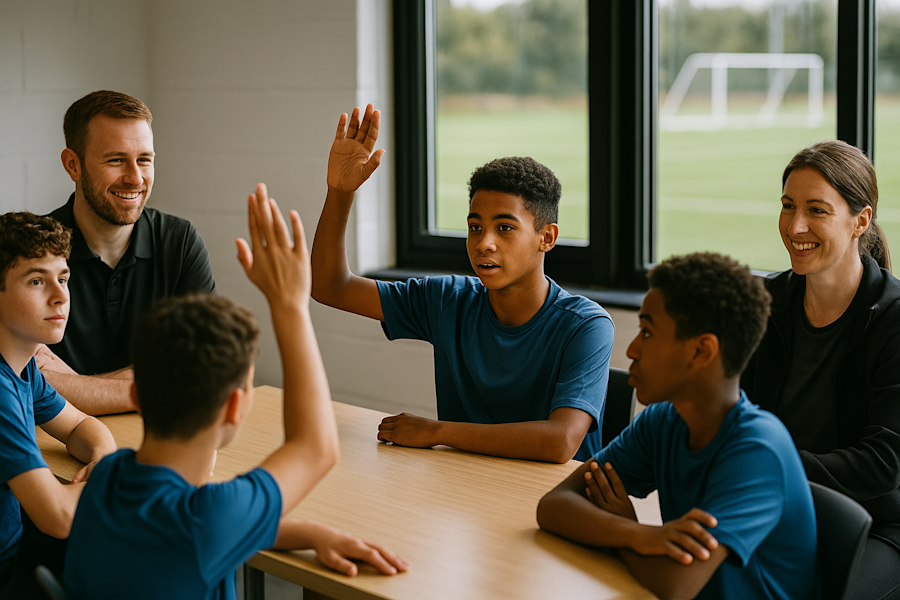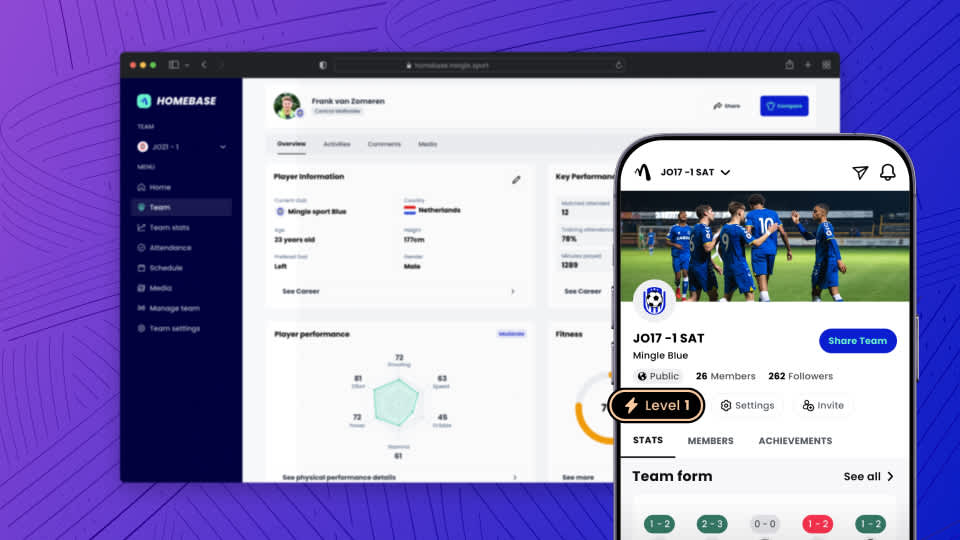What is Football Player Development — And How Can You Improve It?

Football player development is a multifaceted process that includes physical, technical, tactical, and psychological training to help players reach their full potential. Whether at grassroots, amateur, or elite level, player development is key to improving performance, reducing injuries, and building long-term motivation.
In this article, we’ll break down the key components of football player development and offer practical steps coaches and technical directors can take to boost it at both individual and team levels.
Encouraging Self-Reflection and Goal Setting
To develop effectively, players must take ownership of their journey. Encouraging them to assess their own strengths and weaknesses helps build self-awareness and accountability. Coaches should guide players in identifying what they’re doing well and what needs improvement — and reflect on these regularly after matches or training sessions.
✅ Setting clear and realistic goals is another cornerstone. The SMART goal framework — Specific, Measurable, Attainable, Relevant, and Time-bound — ensures that players stay focused and motivated. For example: “Improve stamina to last a full match — reach level 18.1 in the stamina test within 4 weeks.” (check out this guide to get started with self assessments)
✅ Regular one-on-one meetings between coach and player can help turn goals into action. These check-ins are ideal moments to provide tailored feedback, evaluate recent performance, and make small adjustments to keep progress on track.
✅ Lastly, it’s crucial to choose training activities that match development goals. If a player is working on decision-making under pressure, small-sided games or positional rondos may be more beneficial than generic passing drills.
Key Components of Football Player Development
Football development covers five key areas, and each one plays a vital role in shaping a complete player:
Technical Skills: These are the fundamentals — dribbling, passing, shooting, and ball control. Mastery comes from repetition and meaningful practice.
Tactical Awareness: Players should learn to read the game, understand formations, and make smart decisions under pressure. Match analysis, tactical sessions, and guided discovery are all useful tools here.
Physical Conditioning: Strength, speed, agility, and endurance are essential. A structured fitness routine that combines strength training, cardio, and recovery ensures players are physically ready to perform.
Psychological Strength: Confidence, mental resilience, and focus are often what separate good players from great ones. Visualization, mindfulness, and working with a sports psychologist can make a measurable difference.
Lifestyle, Nutrition & Recovery: What happens off the pitch matters too. Good sleep, balanced nutrition, hydration, and recovery routines (like stretching, massage, or ice baths) keep players healthy and consistent.
Building a Player Development Plan
A clear development plan helps both players and coaches stay aligned on progress, expectations, and training priorities. Start by setting both team-wide objectives and individual goals. For example, a team might focus on improving build-up play, while a specific player might target improving their aerial duels
Rather than treating player reviews as occasional check-ins, schedule them at regular intervals — monthly or every six weeks. Use the opportunity to review progress, set fresh goals, and adjust the training focus where needed.
Self-assessment plays a powerful role too. Players can fill in post-match reflections, use video clips to evaluate decisions, or complete a structured self-evaluation form (like the one available in our template pack). Encouraging this kind of reflection builds long-term learning habits.
When designing training sessions, ensure they’re connected to individual and team goals. For example, if a midfielder is working on switching play, sessions should include positional games and long-pass scenarios.
To track physical progress, use simple performance tests — like sprint timing, beep tests, or jump height. These give both player and coach tangible data and motivation. Check out this article about team performance how to get started.
Most importantly: keep monitoring the plan. Player development isn’t linear, and flexibility is key. Adjust for injuries, dips in form, or changes in role — and keep communication open so players feel supported.
Conclusion
Player development doesn’t need to be complicated. Start small: set clear goals, create space for reflection, and build training around the right priorities. When players take ownership and coaches provide structure, everyone wins.



